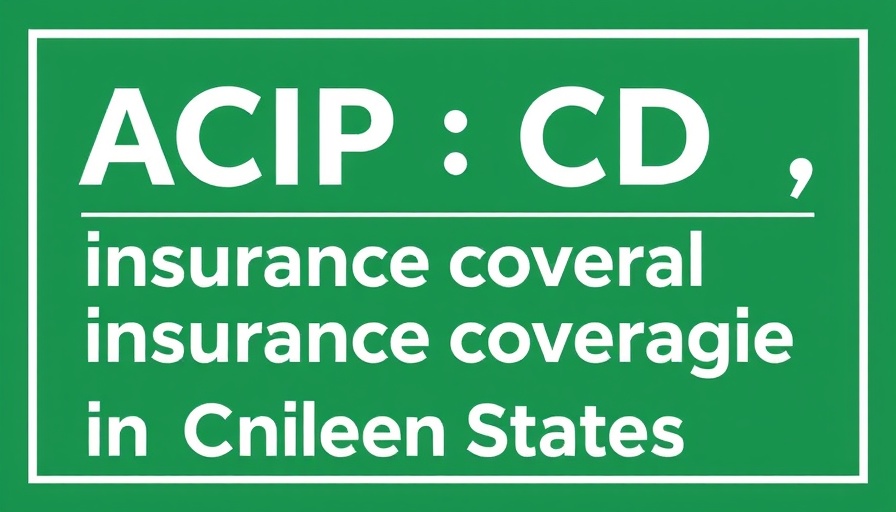
Understanding Vaccine Coverage in the U.S.
As changes roll out in the recommendations for vaccines in the United States, there lies a significant risk for millions—loss of no-cost health insurance coverage for essential vaccinations. The Advisory Committee on Immunization Practices (ACIP) and the Centers for Disease Control and Prevention (CDC) play pivotal roles in regulating which vaccines receive coverage by insurers, making their decisions crucial to healthcare access for all.
Historical Context: How Recommendations Shape Coverage
Established in 1964, ACIP serves as a federal advisory body providing guidance on the use of vaccines. Their recommendations, once endorsed by the CDC, are published widely and directly influence insurance mandates across various payers, including Medicaid and private insurance plans. Since 1981, laws tether the requirement for covering vaccines at no cost to these official recommendations.
Current Trends: Exciting Developments and Challenges
With the recent discussions surrounding healthcare reforms, particularly the Inflation Reduction Act of 2022, significant strides have been made to ensure that vulnerable populations, including uninsured children, receive necessary vaccinations. However, some adults remain without insurance options covering recommended vaccines, highlighting an urgent need for policy changes that address this gap.
Implications for the Public: What Citizens Need to Know
If forthcoming changes to ACIP or CDC recommendations occur, many insurers may halt no-cost coverage for certain vaccines, similar to what recently happened with COVID-19 vaccinations. This situation instills apprehension among citizens who rely on these recommendations for affordable access to immunizations.
Community Action: Staying Informed and Engaged
What can you do to navigate this landscape? Stay informed by following updates on vaccine coverage policies, and advocate for comprehensive coverage for all demographics. Whether insured or uninsured, every community member can play a role in pushing for continued access to life-saving vaccinations.
 Add Row
Add Row  Add
Add 




Write A Comment